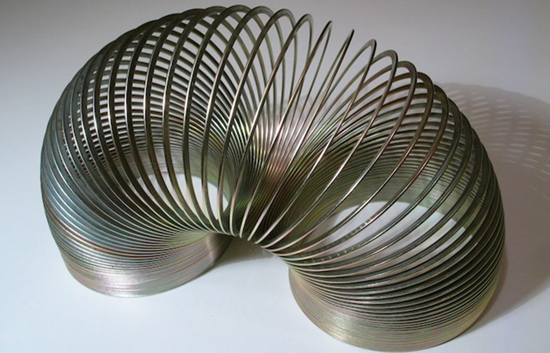
As Tolstoy once said, “War, what is it good for?” Well, if the past is an indicator, it seems to bring about something in human nature. War inadvertently brings with it this need to create something better, and the need to research new technologies to solve problems, which in turn brings about some very unexpected results and innovations. While some may be a little unusual and surprising, others can be life changing. Here are some inventions we have war to thank for.
10. Margarine
You can thank Napoleon III (not that one; this was his nephew) for this invention. Margarine was invented by Hippolyte Mege-Mouries, when Napoleon wanted a butter substitute to feed to his soldiers and the poor in his empire due to the fact that butter was expensive. He offered a prize to the person who could come up with a butter substitute for his army. Meges-Mouries presented Napoleon with his butter substitute, which he called margarine.
Napoleon was looking for a substitute that was cheap, spread and tasted like butter, and lasted longer than the real thing, and Meges-Mouries’s margarine did just that. Yet at the time, this creation did not become popular. It wasn’t until Meges-Mouries sold the patent to a Dutch butter making company that margarine took off. Sadly, Meges-Mouries did not profit from his discovery and died a poor man in 1880, living long enough to see his margarine become internationally famous.
9. Canned Food
The tins of peas, carrots, and other random vegetables that you eat with your dinner all owe their existence, at least in part, to war. Nicholas Apparent can be thanked for providing the foundation for canned food. It was late in the 18th century, when Napoleon Bonaparte offered a prize to any person that could come up with a way to successfully preserve food. Apparently when he wasn’t invading Russia during winter, Napoleon and, as noted in the above entry, his family liked staging random food contests and would have fit in nicely on Shark Tank. Anyway, older, traditional methods for food storage didn’t preserve items long enough and Napoleon needed a way to send food to France’s armies all around the globe.
Napoleon offered 12,000 francs to anyone who could do this. Appert won the prize with his process and laid down the foundation for modern tinned food stuff. His process involved heating food in sealed glass jars and bottles placed in boiling water. This process was then built upon by numerous inventors, eventually giving way to the tin can and your can of peas.
8. Silly Putty
Silly Putty is yet another accidental by-product of war, and specifically the research that goes into the wartime effort. It was during World War II that silly putty came into existence. The war had left many resources in short supply, one of these being rubber. The U.S. military needed an inexpensive substitute, because rubber was vital in the war effort as it was used in tires, boots, rafts, and gas masks. In 1943, scientist James Wright was researching synthetic rubber when he combined Boric acid with silicone oil. The result was literally a glob of goo. After experiments on the substance, Wright concluded that it was useless as a substitute for rubber, but found that the material could bounce, stretch farther than normal rubber and had a very high melting point.
It wasn’t until after the war that Silly Putty came into its own. It proved to be a huge hit with children around the world, and even adults found uses for the substance, using it to fix things around the house. Silly Putty was even brought to space by the astronauts during the Apollo 8 mission.
7. The Slinky
In 1943, engineer Richard James was working on a system that would be used to stabilize and support sensitive equipment on board ships in rough seas during war. The Slinky started out as a spring, or a tension spring, to be more exact. At some point during his project James knocked over a box of springs he was using. This box contained a tension spring, and as he started to pick up the springs he noticed that the tension spring seemed to keep moving, almost as if it was walking. And so, the Slinky was born.
James and his wife saw the potential of the Slinky as a children’s toy, and began to market it that way. At first sales were slow but at Christmas of 1945, Gimbels department store allowed James to demonstrate his new toy. Within 90 minutes, the first 400 Slinkys were sold.
6. The Jerry Can
The jerry can was a German invention developed in the 1930s for military use at the start of World War II. The Germans called it Wehrmachtskanister. They saw the importance of being able to carry fuel and water and by the time WWII came about, they had stockpiled thousands of these in anticipation for the conflict. These jerry cans turned out to be far superior to their Allied counterparts; they were robust, durable and easy to transport.
The original design featured an ‘X’ on each side, allowing room for expansion and adding strength to the structure. On the top of the can were three handles, making it easier to pass from one person to another and also allowing two cans to be carried side by side in one hand. When the U.S. military was informed of the invention they ignored it, but it eventually found its way to Camp Holabird, where it was reverse engineered and redesigned.
5. The Microwave
The microwave is another member of the accidental invention group. The potential of microwaves was realized by Percy Spencer, who was researching radar technology. Spencer was working on magnetrons one day when he noticed that a chocolate bar that he had in his pocket had begun to melt. Spencer, who worked for the company Raytheon at the time, realized the potential of this discovery.
After more experimentation Spencer realized that this microwave technology could be concentrated to cook food quicker than a normal oven. Raytheon produced the first microwave in 1947. It was large, expensive, and not very popular. It wasn’t until sometime later, when microwaves became smaller and more affordable, that they rose in popularity. If it wasn’t for the war and the research into radar and microwave technology, Spencer may not have stumbled onto the invention that changed kitchens forever. And speaking of radar technology…
4. Radar Systems
The idea of radar was around before World War II but it was in that war that the first practical radar system was developed by Robert Wattson-Watt. Wattson-Watt developed the technology when a series of radar related discoveries allowed him to do so. Wattson-Watt built on these discoveries and realized that he could use radio transmitters to create an echo off of an airplane by bouncing radio waves off of it. This plane could be over 100 miles away, yet the echo would return.
Wattson-Watt presented this information to the Royal Air Force, and believed that this technique could give the RAF an early warning system to alert them of the threat of incoming planes. This radar allowed the Air Force to see when the enemy was coming, and not only that, but how many planes and how far away they were. This meant that the enemy lost the element of surprise. This invention helped turn the Battle of Britain in favour of the RAF.
3. Sanitary Pads
Yes, you’ve got war to thank for disposable sanitary pads, too. Although throughout history menstrual pads have been used, and made from various materials like cotton and fur, it wasn’t until World War I that nurses in France realized the bandages they were using on the injured soldiers could be used for their own personal use. These particular bandages were made from a combination of wood pulp, fibres, and other materials, a combination that made them much more absorbent than normal cotton bandages. They became popular with nurses because they were readily available, much more absorbent, and very cheap, which meant that the bandages could be simply thrown away when they were no longer, um, “useful.”
The Kimberly Clarke Corporation that supplied these bandages to the nurses during the war was left with a surplus of bandaging after WWI, and used the nurse’s idea to create the first disposable pads.
2. Super Glue
Super glues (otherwise known as cyanoacrylates) were discovered in 1942. Contrary to popular belief, super glues were not specifically invented to glue wounds together during battle, but were in fact an accidental invention created by Harry Coover. Coover was actually attempting to create a clear plastic gun sight to be used on rifles by the Allies. It was during his research into these sights that he stumbled onto the formula that eventually became Super Glue, yet due to the fact Coover was working on making sights for guns he considered the sticky substance useless and threw it aside. It wasn’t until some years later while working on another project that he and a colleague discovered the formula for the second time.
At this stage Coover was working for a company called Eastman Kodak. Coover and his colleague, Fred Joyner, realized the commercial potential of this formula due to the fact it stuck to just about everything. Although not specifically invented for sealing wounds, Coover’s invention would go on to do just that. During the Vietnam War, Super Glue was reportedly used to seal the wounds of injured soldiers to prevent them from bleeding out until they could get to a hospital to be stitched up.
1. Duct Tape
Duct tape came about during the Second World War, after the U.S. military needed a way to safely seal ammunition cases while also keeping the moisture out. It was created by a division of the Johnson and Johnson Company, which used medical tape as a base and applied a couple of new technologies to create a tape that was durable and waterproof. They used a rubber adhesive, and the polyethylene coating allowed them to stick a cloth backing onto the tape. The result was the water repelling tape that we know and use for basically everything imaginable today. Soldiers came to refer to it as “duck tape” during the war, partly due to its ability to have water simply roll right off of it.
The versatility and durability of duct tape allowed it to continue to sell after the war. The makers of the tape changed its name from duck to duct, and changed the colour of the tape from army green to the grey we see it as now, both due to the fact that after the war, duct tape was used to repair air conditioning ducts in homes, and these ducts were grey in colour.










No comments:
Post a Comment
Please adhere to proper blog etiquette when posting your comments. This blog owner will exercise his absolution discretion in allowing or rejecting any comments that are deemed seditious, defamatory, libelous, racist, vulgar, insulting, and other remarks that exhibit similar characteristics. If you insist on using anonymous comments, please write your name or other IDs at the end of your message.